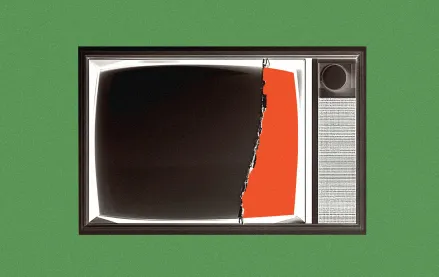Programmatic snafu speak, translated: a guide to the usual excuses

Barely two months into the year, and here we are with yet another exposé on the cesspool of content that programmatic ads bankroll.
A decade into these recurring scandals, the reaction cycle is predictable: outrage, disbelief and a flood of finger-wagging — this time, even from U.S. senators.
Usually, this would be the part where someone unpacks the convoluted mechanics of ad tech to explain why it keeps happening.
But let’s be honest — there’s nothing new to say there. So instead, here’s a guide to decoding the platitudes and corporate tap-dancing that invariably follows these fiascos.
What they say: “We are working closely with our partners to investigate.”
What they mean: “We have no idea how our ads got there, and neither do the vendors we pay to know.”
What they say: “We take brand safety incredibly seriously.”
What they mean: “We’ll act like this is the first time it’s happened, even though it happens constantly.”
What they say: “We are working with out partners to address this.”
What they mean: “We are scrambling in Slack threads to find out who’s to blame.”
What they say: “This does not reflect our values.”
What they mean: “Our values are whatever keeps the CFO from having a meltdown.”
What they say: “We have strict controls in place to prevent this.”
What they mean: “Our media buying is a black box of intermediaries and automated auctions, but sure, let’s pretend we have control.”
What they say: “We have paused all advertising on [insert media owner] while we reassess our policies.”
What they mean: “We’re yanking spend for a few days until the headlines blow over then it’s back to business as usual.”
What they say: “We are implementing measures to ensure this doesn’t happen again.”
What they mean: “We’ll slap on another third-party verification tool, which will add more fees but change absolutely nothing.”
What they say: “Brand safety is our top priority.”
What they mean: “But also, efficiency. And reach. And CPMs. And scale. And — wait, how did our ads end up there again?”
What they say: “This issue stems from the complexities of the programmatic ecosystem.”
What they mean: “Blame the tech, not the business incentives that led us to this mess.”
What they say: “We trust our agency and ad tech partners to uphold the highest standards.”
What they mean: “And when they don’t, we’ll pretend we had no idea what was happening.”
What they say: “We have removed the offending site from our media plan.”
What they mean: “One down, thousands more questionable placements to go.”
What they say: “We are implementing new AI-driven brand safety tools.”
What they mean: “Adding more layers of tech to fix problems created by….layers of tech.”
What they say: “We are in dialogue with the platform to ensure better safeguards moving forward.”
What they mean: “We sent them a strongly worded email, and they auto replied with a list of new ad targeting options.”
What they say: “We remain committed to responsible media investments.”
What they mean: “But not committed enough to spend more on human-vetted inventory.”
What they say: “Due to the complexity of programmatic buying, certain placements may slip through.”
What they mean: “Due to our business model, we prioritize volume over control.”
What they say: “We optimize toward high-quality placements.”
What they mean: “We auto-bid on a bunch of exchanges and pray the brand safety filter catches anything too embarrassing.”
What they say: “Our approach balances scale with precision.”
What they mean: “Our approach prioritizes scale, invoices and plausible deniability.”
What they say: “We continuously refine our targeting strategy to drive better outcomes.”
What they mean: “We tweak some bid settings and hope no one asks why 70% of the spend went to made-for-advertising (MFA) sites.
What they say: “Our proprietary optimization engine ensures maximum efficiency.”
What they mean: “It ensures maximum efficiency in extracting fees while pretending to add value.”
What they say: “We are committed to full transparency in the supply chain.”
What they mean: “Here’s a 50-page list of domain IDs. Good luck figuring out what any of them actually are.”
What they say: “We remain focused on driving advertiser value.”
What they mean: “We remain focused on making sure you don’t cut your budget.”
What they say: “Our AI-powered solution ensures brand-safe placements.”
What they mean: “Our AI is just as confused about programmatic as you are.”
What they say: “Our platform is committed to transparency.”
What they mean: “Here’s an obfuscated log-level report that tells you nothing useful.”
What they say: “We have stringent brand safety measures in place.”
What they mean: “We have a bunch of checkboxes in a dashboard that give you a false sense of security.”
Rinse. Repeat. See you next crisis.
More in Marketing

New partnerships, marketing fuel BNPL’s holiday surge
This holiday season, more brands deployed BNPL services with different payment options beyond the more familiar “pay-in-four” structure.

Pitch deck: How Amazon is recasting Twitch as a core part of its CTV pitch
Amazon is positioning Twitch as a defining asset in its CTV ambitions.

Netflix transforms former mall department stores into experiential venues
The location in Dallas opens this week, and one at the King of Prussia mall near Philadelphia opened last month.







